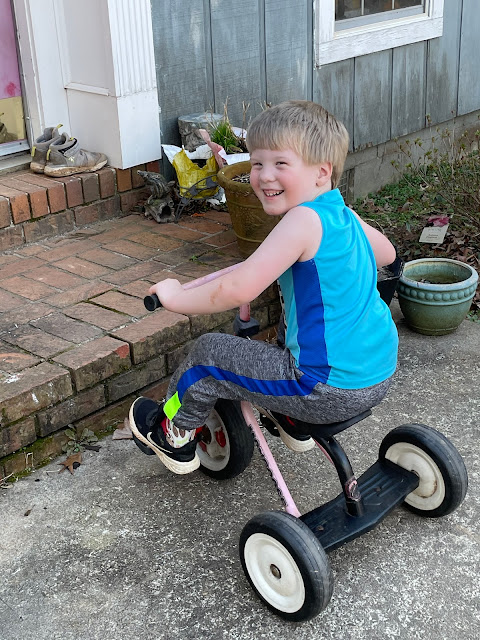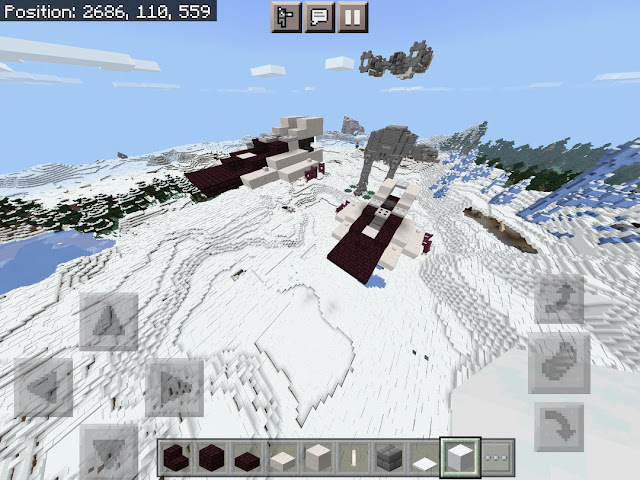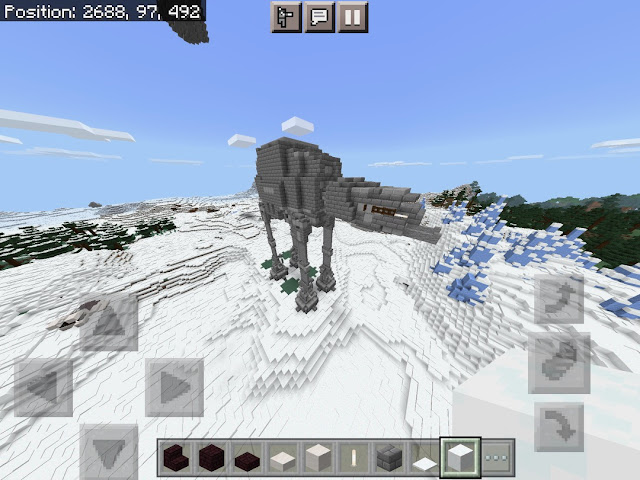With near-incessant rain earlier this month, we brought one of Charlie’s tricycles inside for him to ride when it’s too soupy to ride outside. He has a Radio Flyer “Fold and Go” (it folds up quite nicely for transport) and one I got off the Zon (it has a push/steering bar for a parent). Encouragement and getting bigger means he doesn’t need to be pushed quite so much, and he’s quite happy to hop off and push his trike around just for grins. The Fold and Go is the inside trike, when one is needed.
Lately, the wife has been requiring me to go with her to take hay to the cows. This usually involves a huge roll of hay, and it’s more convenient (for her) with someone else to cut the twine holding it together before she rolls it out in the pasture. Charlie comes to watch. I really ought to get video of her hay-dispersal technique; it takes quite a bit of coordination. The tractor has an end-loader attachment, except there's a five-foot spike in place of a scoop bucket. She spears the hay on it, takes it out to where she wants it in the pasture, and drops it off. Then she uses the spike like a huge fingertip to flick the roll down whatever slope is convenient (this is Georgia, flat ground is a rarity unless it’s been leveled).
But I digress. Earlier this week, after returning from a hay-dispersing session, Charlie jumped on his trike and began riding. “Uh,” he said, then spun the pedals. The trike didn’t move.
I pulled the front wheel off the fork, and had a look…
 |
| It’s broke, Jim. |
“I’ve been expecting that,” the wife opined. “He keeps running it into things.”
Charlie was going “ride?” and making his sign for cycling, so I thought things over. Back in Mason’s day (or maybe earlier), we picked up a Mongoose trike at a yard sale. It was fine until one of the rear wheels broke, then it got put aside. I used the good rear wheel when Charlie parked his Zon trike too close to the edge of the driveway and Big V’s widower caught a wheel. So my first thought was maybe I can pull the front wheel off the Mongoose and Frankenstein a working trike. No such luck—the mounts are completely different. I briefly considered an entire fork swap, but that would require both the Radio Flyer and the Mongoose to have the exact same fork tube diameter. They’re close, but it would be a lot of work to verify…
But hey! Why not pull the rear wheels off the Radio Flyer and put them on the Mongoose?
 |
| Sparks fly! |
The Dremel already had a metal cutting wheel on it from the last job (and I can’t for the life of me remember what that was), so I let 'er rip. I was very careful, and put only a small notch in the plastic. It wasn’t necessary to cut all the way through the push nut; just grooving it was enough to weaken it to where I could pull it off with pliers. The axle was in a frame tube, so it slid out and I got the second wheel off for the price of one.
With the wheels off, I put the big wire wheel on a drill and skimmed the surface rust off the Mongoose’s axles:
This, of course, took longer to get the drill and mount the wire wheel than to do the actual work. I sprayed some lube on the axles, more to prevent re-rusting than reduce rolling resistance.
With the axles ready to go, it was time for a test fit. OOPS, the inside of the wheels rubbed against the step. Fortunately, it required only a pair of thick washers to add the needed space:
 |
| Just a little extra space was all we needed. |
The second test fit left me satisfied, and I waited for a box of push nuts I ordered off the Zon to arrive. Then, I had to re-assemble everything after I turned my back and Charlie tried to ride it. Fortunately, I managed to find the outside washers (one outside the garage and one in the gravel driveway), and Dizzle (Sizzle’s #2 son) found the missing bearing.
The new push nuts didn’t want to cooperate—it was afterwards that I remembered a reviewer saying to use a socket to even out the force—so I found the old Mongoose push nuts and popped them on instead.
Ready to ride?
Yup! I moved the seat as far back as it would go for Charlie, but a little time with a drill press might let me move it back a little farther. The Mongoose’s pedals have a longer… throw? moment arm? than his other trikes, so he seems to be able to get a little more power out of it, letting him get up the driveway a little better.
I wonder how long it will be until he realizes he can stand on that back step and push with one foot…








